Hard to believe it is April already, the weeks are flying by; but as we start another week here is another Mystery Creature to keep you guessing…. can you name it?
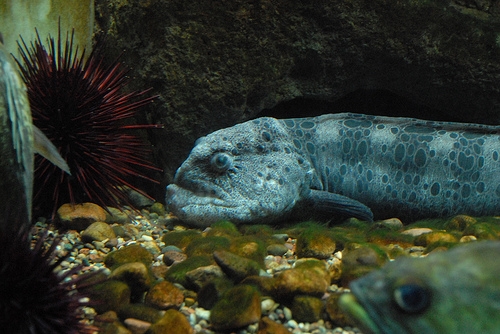
Science, Curiosity and Life

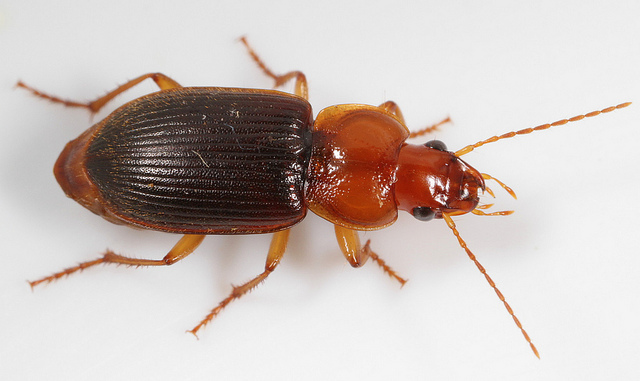
Did you guess this week’s Mystery Creature? It was the Bombardier Beetle… a little bug that packs a big punch when threatened!

When the bonbardier beetle is threatened it uses some serious chemical warfare against the predator – shooting a hot burning chemical spray out his rear end! Although more than 500 of these ground beetles exist they all have the same method of defense. It is all down to the storage of two chemicals (in most species – hydrogen peroxide and hydroquinone), within a reservoir in the abdomen of the beetle. When threatened the beetle releases both chemicals into another chamber – a thick walled firing chamber where catalytic enzymes are release kicking off the reaction. Temperatures rapidly rise to near boiling causing an explosion that propels the hot toxic spray out valves at the tip of the abdomen. The spray is accompanied by a short popping sound.
It seems these impressive defense mechanisms are even inspiring research into aircraft safety mechanisms in the event of engine failure!
Bombardier beetles belong to the family Carabediae and are found on all continents except Antartica.
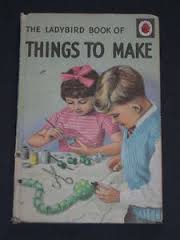
Its Mother’s Day on Sunday and I have three little delights that call me Mum… and oh how I love it! When I was younger I often changed my mind about what I wanted to be when I grew up but one thing I knew for sure was that I wanted to be a Mum! I had a great role model to inspire me!

My biggest fear as I approached the birth of my first child was not of childbirth or pain or health, it was the fear that I would not instantly fall in love with my baby. I need not have worried; the power of that instantaneous bond was incredible.
Scientist and medics will explain it as a result of oxytocin released at birth, but it is so much more! Studies have shown that women’s brains can literally increase in size once they become a mum, but why has no one studied the undeniable, emotional swell of the heart?
For once this blog is not about the science or the facts … it is about the woman who inspired me to want to be a mother myself…. It is about my Mum.
I have some wonderful memories of my childhood, not minute by minute but scanning through the years. Whatever the memory, whatever the image, there is one person who seems to feature in all… my mother.
No matter what has happened in life I have always known that my Mum was there for me, often before I even realised I needed her. From grazed knees to lost friendships my Mum always knew how to make it right… and she still does.
Every childhood illness was made a little more bearable having my mum around. She always knew what would make it better; the cold facecloth, the warm soup, the dark room or just the loving hug. I can’t imagine it was easy to see how sick I was on each of my pregnancies but my mum was a constant support throughout; sometimes making an eight hour round trip just to come visit me in the hospital.
Of all the memories I have, these ones probably stand out the most….

The times we spent doing all those craft projects at the kitchen table, we went through the entire ladybird book… give me a calvita cheese box now and I know just what to do with it
The day I fell out with two kids down the road and my mum stopped what she was doing and came outside to play with me when she saw me on my own
The way she sat for FOUR hours holding my new daughter because we finally had her asleep and she wanted me to rest
After countless trips to so many shops… the moment we both knew we had found the perfect wedding dress
The hours spent walking my children in the middle of the night (and, although I don’t remember, I image there were many hours spent walking me too)
Fried soda bread for my breakfast when I come to visit
The day the budgie died and my Mum spent the afternoon helping me with his funeral
The wonderful home baked sweet tea EVERY Saturday, at the time none of us appreciated the silent sacrifice of an afternoon spent baking
The help, encouragement and advice when I became a mum myself

The way she always packs the “Marigolds” when coming to visit me and spends the entire time cleaning my house and cooking the dinners
The day she had to bring me to casualty for an x-ray and she dealt so calmly with my meltdown when someone suggested I might have to stay overnight
Her shepherds pie, her corned beef, her colcannon and the fact that I have accepted that mine will never taste quite as good
And most of all I remember the day my Mum dropped everything and managed to travel over 2000 miles to be by my side when I needed her
Sometimes there is no need for science to explain what we already know, and I know that I am lucky to be able to call her my Mum!
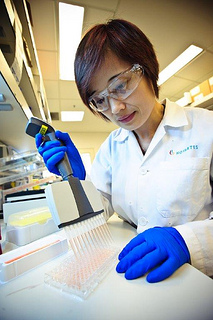
What do those scientists on da telly really do?
Scientists on da telly … no matter what the report is about… the scene is always the same… people in lab coats, wearing latex gloves, pipetting small amounts of liquid into tiny little tubes and, for the finale… someone working with their arms well immersed in a fume hood!

That, apparently is what all scientists do! (that and nothing but that!)
I roll my eyes and groan and start ranting at whoever is unfortunate enough to be sitting beside me on the couch… but, actually, yes, I did do all those things when I was in a lab… but there is more to it than that, honestly!
So here is a post to right a few wrong and let you in on the secrets behind the lab door; what’s all that funny looking stuff and what do those scientists on da telly really do?
THE LAB COAT
Well, yes, you will find one of these on pretty much every occupant of the lab. Scientists will tell you that they are to protect their clothing but really… they are to hide what lies beneath because, let’s be honest, how many scientists do you know with a good sense of fashion?

THE PIPETTE

That funny looking thing that all those scientists are holding in their hand… in my day that was called a Gilson Pipette (Gilson for short because we were uber cool), named after one of the main manufacturers, but, I will concede, it has been a while, they may just go by pipette now, or perhaps some other brand name has taken over!
These were pretty cool as they came in different scales, colour coded on the top so you knew just the right one to use! With just a little turn of the dial you could set them to the exact measure you wanted to use….right down to 0.2 microlitres!

And if you really wanted to impress you could use the multi-tiped version… filling ten or more tubes in one go!
Uhuh, the excitement when that one came on the scene was something else, let me tell you!
THE FUNNY LOOKING TUBES

EPPENDORPHS! Don’t you just love the sound of that… Ep.En.Dorphs! I’m telling you, there is a whole new vocabulary to learn once you don that white coat! Again I think these are named after the manufacturers, a company in Germany.
Nowadays you can get them in all different colours – perfect to colour coordinated with your favourite lipstick your experiment.
They come in mini-mini versions too, called PCR tubes, extremely cute but requiring some petite, nimble fingers for those oh-so-tiny lids. After opening and closing hundreds of these things the cuteness factor can wear off a bit!
VORTEXES AND CENTRIFUGES
So once all those little tubes are filled, what happens next? Just like with baking, it is always a good idea to ensure everything is well mixed. First up… the vortex, just push down on the little rubber top and the entire contents of the tube, and every cell in your body, get a good shake up! One of those childishly amusing experiences that never gets dull.
James Bond should have included one of these clever little gismos in his super gadget kit, for the perfect Martini every time.

Shaken,
not
stirred!
After the shake up its time for a little spin down. The centrifuge is the machine for the job, again coming in all shapes and sizes, my own personal favourite… the little picofuge…. in fact I love them so much, I want one for my kitchen counter. I am not even sure what I would use it for but I guess it just appeals to the geek within!

The cute little
picofuge
…every kitchen
should have one!
So there you have it… next time you are watching science on the news you can see how many of these you can spot (hopefully not the flashing guy in the lab coat but the rest should be in view for sure).
Of course this only covers the Irish version of the scientist… on the flip side of all this is the whole CSI scene… a must watch for all us geeky types although it elicits an equal measure of interest and satire. The super high tech,the instantaneous results, the lasers, the spraying, the torches and enough luminol to float the titanic! As for the crime scenes themselves… who knew you could investigate them in high heels and leather jackets… not a lab coat or a hair net in sight!

Additional image credit/sources: Vortex: www.benchmarkscientific.com; CSI scene: Michael Yaris, CBS

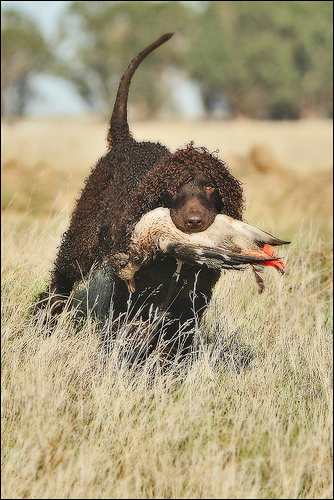
This week’s Mystery Creatures were all native Irish animals, but did you know what they were?
1. St. Patrick supposedly banished all the snakes from our Emerald Isle, but here is a reptile he left behind… the only native Irish reptile… the Common (vivparous) Lizard
Although not commonly spotted these lizards are found in a variety of habits all over Ireland; relying on the Sun to moderate their body temperature, these creatures need to hibernate to survive an Irish winter.
2. This is just one of a number of native Irish dog species…. the Irish Water Spaniel

This cute curly haired canine is a water retriever. Although it may look more like a large poodle it is the largest and one of the oldest breeds of spaniel.
3. A really charming native Irish species…. the Moiled Cow!
This cow is a rare native breed, distinctive for it’s lack of horns and specific colouring. The name comes from the Gaelic word Maol, meaning mound and refers to the dome shape of it’s head.
4. Hard to mention Irish animals without a nod to our equine friends…. this one is the Kerry Bog Pony.

These native ponies were traditionally used for hauling peat from bogs. Their diminutive size (10 to 11.5 hands) and gentle temperament also made them ideal work ponies for small holdings.
5. And finally, the native Irish Black Bee, specially adapted for out damp and cold weather.
Our native honey bee has the longest body hair of all the European species, adapted to keep it warm against the Irish climate. It has a shorter breeding season to fit with the shorter days of warmth that (technically) define and Irish summer!
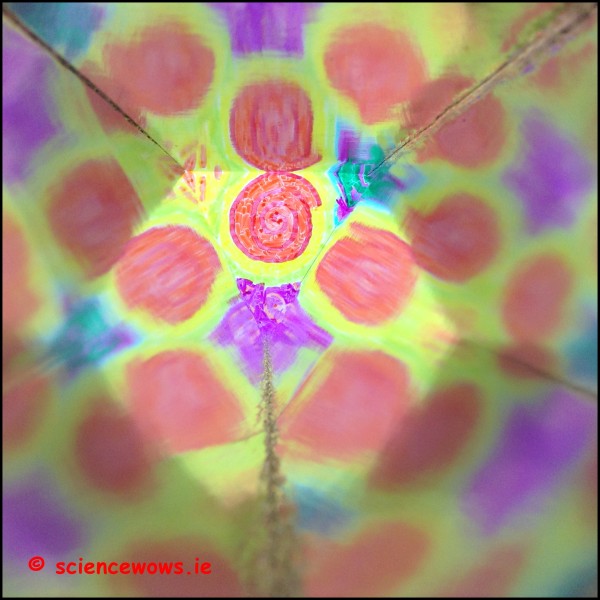
The weekend already…Yay! Hope you are doing something fun…. if you are looking for an activity to entertain your children why not try this?… My junior scientists had great fun making these simple kaleidoscopes and learning about light and reflection!

Here is what you will need:
What to do…
1. Cut a 6cm strip off the long end of our A4 mirrored card leaving the card 24 cm in length
2. Fold the card in half (mirror side in) so that the short ends meet
3. Open back out the card and next fold the short ends in so that they meet in the middle
4. You should now have a card with three folds and four sections, 6 cm wide
5. Next fold the card into a triangle (mirrored side in), with one of the strips overlapping
6. Tape this overlapping strip along the edge so the triangle is now secure – this will be the tube of your kaleidoscope

7. Now it is time to prepare the designs for your kaleidoscope… we used the coloured pens to draw designs on a square piece of clear plastic, at least 6 X 6 cm in size.


8. Once finished tape the coloured squares on to a piece of transparent paper (or you can just draw your design directly onto transparent paper if you wish)
9. Now it is time to use your Kaleidoscope… hold the transparent paper with the design up to a window or a light source, look at it through the kaleidoscope… rotate the paper and see how the patterns change


What is happening?
Light travels through the transparent paper into the kaleidoscope where is bounces off each of the three sides before reaching our eyes. As each side is mirrored it reflects the light that bounces off it and also the light bouncing off the other mirrored sides of the kaleidoscope. All this reflecting makes multiple images of different parts of the pattern and create a very interesting effect.
Do have a go it is great fun!
*Note: if you cannot get mirrored card you can use cardboard covered in aluminium foil. This will work better if you also add a layer of clear plastic on top of the foil… creating a better mirror!
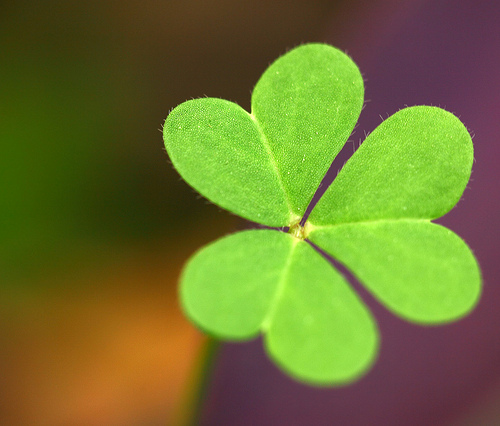
The family are all dressed in their finest green clothes, kids proudly sporting their homemade badges and just before you head to the local parade someone always asks… “Where is the Shamrock?” Before you go scurrying out to scan the front lawn you might like to know what you are looking for and why it has become such a big part of our National Day.
So firstly, WHAT IS A SHAMROCK?
What we refer to as the shamrock is actually a type of clover. In fact, there is no “shamrock plant”, the word shamrock comes from the Irish word “seamair og“, meaning young clover! There are approximately 300 plants in the clover (Trifolium/trefoil) genus and these are legumous/pea plants. Clover plants have (typically) three lobed leaves.

WHICH CLOVER PLANT IS THE ONE WE CALL A SHAMROCK?
There seems to be three likely candidates for the title of the “real” shamrock, namely, the suckling/yellow clover (Trifolium dubium), the white clover (Trifolium repens) and the red clover (Trifolium pratense). Which one holds the ultimate “shamrock” title? It would appear they all do! All three types can be seen adorning the Irish around the country on March 17th. The most popular though, and the one officially termed shamrock by the Department of Agriculture is the yellow clover (T. dubium).
Don’t feel bad, however, if you think you might have accidentally sported an unofficial shamrock, as classification is difficult in March when the plants have not yet flowered and given the game away.
SO WHY DO WE USE THE SHAMROCK ON ST. PATRICK’S DAY?
Although the shamrock is associated with St. Patrick, it was likely already in use in Ireland as a popular symbol of the Tua Cross among Celtic Druids. The number three was also considered a mystical number in the Druidic religion, making the shamrock a sacred plant. It is told that St. Patrick used the Shamrock to symbolize the concept of the blessed trinity as he preached of Christianity, perhaps wisely drawing on its sacred and popular status.
WHY ALL THE GREEN?
Chloropyl is the pigment responsible for the predominant green colour of our “Emerald Isle”, shamrock included. It is interesting to note though that St. Patrick was originally associated with the colour BLUE, and this only changed in the 19th century when green became the colour associated with Ireland.
SOMETHING EXTRA SPECIAL ABOUT THE SHAMROCK
We are lucky such an abundant of shamrock (and clover) in our pastures and lawns! These plants are a highly nutritious food source for livestock, being rich in minerals such as phosphorus and calcium. The flowers also provide a rich supply of nectar for many insects, but the thing that makes them so special is the fact that clover plants enjoy a symbiotic relationship with nitrogen fixing bacteria (present in nodes on the plant). These bacteria (rhizobium) are capable of extracting nitrogen from the atmosphere and converting it into ammonia which is added to the soil as a natural fertilizer. Clover can add up to 150 kg per hectare of nitrogen to the soil and increases availability of other nutrients for following crops.
All this from such a humble looking plant, what a great National Symbol, I will be wearing mine with pride this St. Patrick’s Day, how about you?

As it is St. Patrick’s Day today and the Irish are celebration all over the world, this week’s Mystery Monday post is a medley of native Irish animals…. can you name them?
1. St. Patrick supposedly banished all the snakes from our Emerald Isle, but here is a reptile he left behind… the only native Irish reptile… do you know what it is?

2. There are a lot of native Irish dogs to celebrate but here is just one… can you name it?

3. The dairy herd is still very strong in Ireland, can you name this native Irish breed?

4. Many Irish equine breeds are famous around the world, the Connemara pony is a one example, but here is another, do you know what it is?

5. And finally, we are all familiar with this insect, but which one is native to Ireland?
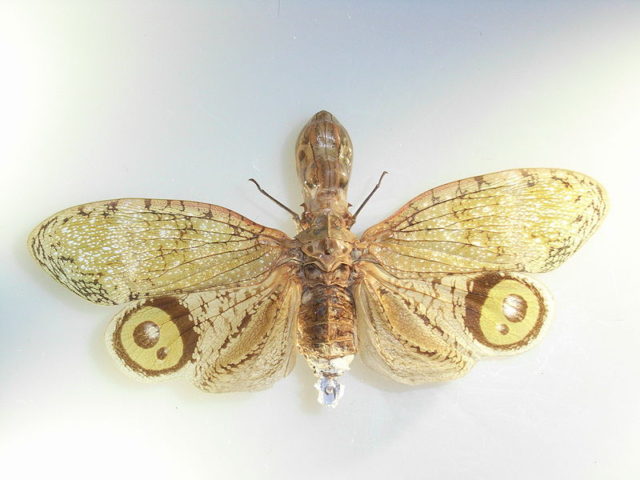
This week’s Mystery Creature was a funny looking insect, but despite its ominous appearance it is actually a harmless plant hopper, a Fulgora laternaria, commonly called a peanut head bug or an alligator bug due to the unusual appearance of its very large head.
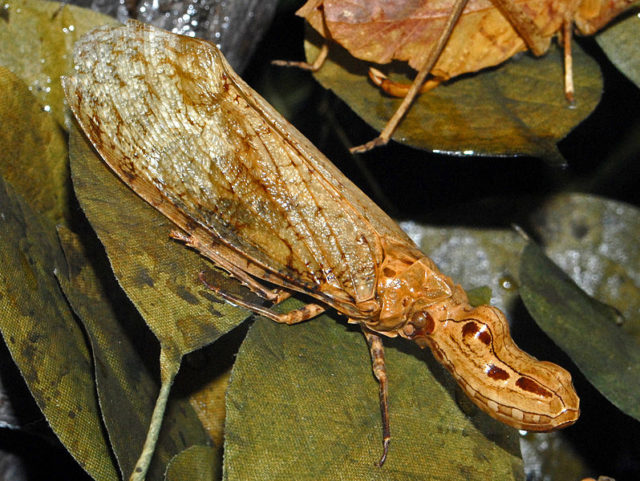
A native of central and south America, the adult bug is approximately eight to ten cm in length. Despite some unusual stories and myths about this insect and its dangerous bite, it is actually a harmless plant eating bug, sucking nectar or resin through it’s straw like mouth, not exactly a menacing threat.
The peanut head bug has a number of unusual defenses that it uses to prevent itself from being eaten, firstly, that unusual head is thought to resemble the head of a lizard, to scare away potential predators. If that doesn’t work the bug opens up it’s wings to reveal two large, fake, eye patterns on it’s hind wings. And if that doesn’t work it releases it’s last line of defense… a toxic, skunk like odour!
